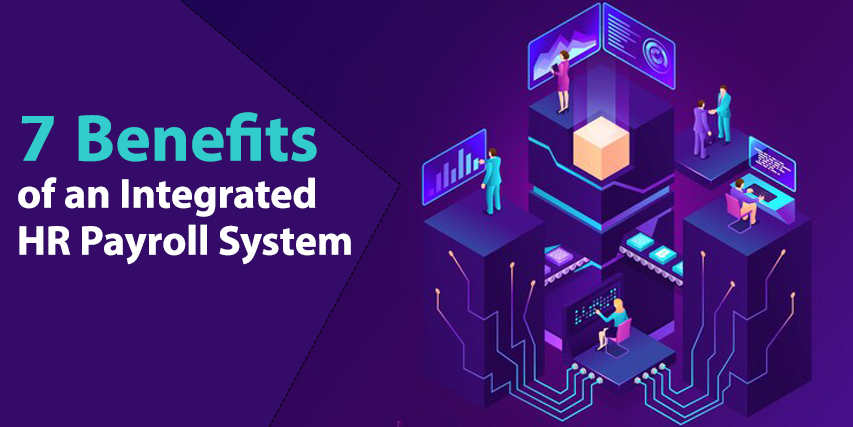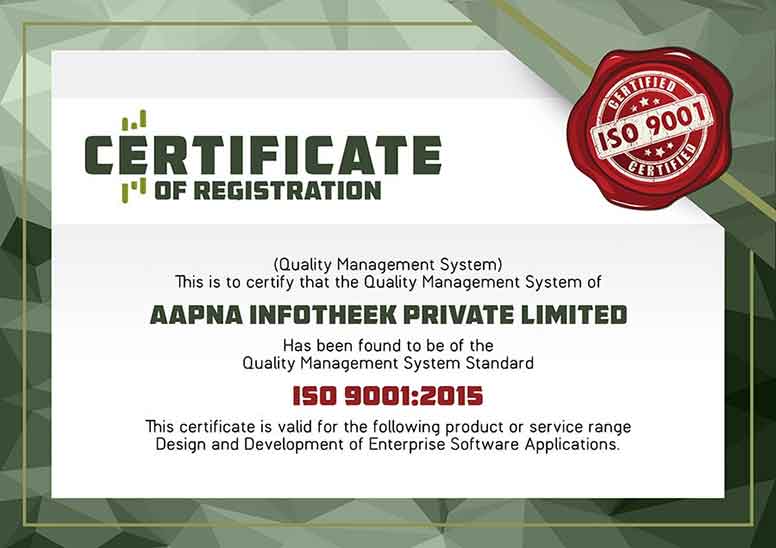Every operation professional knows the benefits that a business can experience by streamlining major functions like HR, payroll, etc. However, most companies use multiple systems and tools to manage these tasks. While this may keep the process simple, sometimes, it can be challenging to access data from different tools. Besides, it also increases the risk of unnecessary redundancies.
So, is there any solution for this? The answer is yes. Businesses just need to invest in the best integrated HR payroll system to boost their HR and payroll process efficiency.
With hybrid and remote work models getting popular, businesses have started using such systems to automate HR operations. If you have not deployed it yet in your business, then it’s time to give it a try. Here we have listed down seven major benefits of using integrated HR and payroll systems that will explain why you should opt for this.
What Do You Mean by Payroll Integration?
Payroll integration is a process of establishing a link between HR and payroll software to manage HR processes accurately. It ensures a consistent flow of data between multiple systems. These systems may include time-tracking tools, HR management systems, accounting software, etc., which are used to store employee information.
Is An Integrated HR Payroll System Good For Your Organization?
Remember that an integrated system isn’t just a facility for your organization but, a crucial element for effectively managing the workforce. Using multiple payroll and HR platforms can be very painful. One has to spend more time to maintain these systems. Using multiple systems can also lead to delays, and you may end up with incorrect data. This increases the risk of putting employees at a disadvantage.
With an integrated payroll system, HR managers just need to enter employee data once. They can easily perform attendance tracking, payroll management, time management, and other important employee onboarding activities on a single platform. So, an integrated HR payroll system is a perfect solution for every organization.
Exploring the Benefits
-
Better and Detailed Reporting
Interlinking the payroll and HR systems means a single source of reports and data. When you have all the important data stored safely in one place, this boosts transparency. Besides, you will enjoy better and faster reporting. As it will be much easier for the team to obtain data from a centralized platform, multiple reports can be easily compiled as well as delivered quickly. This also lowers the risk of missing data. With detailed employee information at one location, management can make informed decisions. These integrated systems are designed to help obtain a single report with details about an employee’s total earnings, performance rating, manager information, and more. Such detailed reports can help a lot during the employees’ performance review process.
-
Fewer Data Entry Errors
Manual input of data into multiple payroll systems is very time-consuming. Besides, it can lead to errors. Accidentally missing a number in Excel is enough to lead to a data mismatch. If wrong data is entered into the reports, it may cause fatal business decisions. Remember that payroll errors can lead to penalties and compliance issues. So, it is important to lower the amount of data entered manually. One of the best and most effective ways to achieve accurate data is by using an integrated payroll and HR system. By establishing a connection between these two systems, you can enable automated data transfer. This, in turn, reduces the possibility of data errors. As there will be fewer or no errors in payroll, organizations will witness higher employee satisfaction and reduced turnover rates.
-
Better Regulatory Compliance
Compliance is a vital aspect of every business’s payroll processing. Having all the HR and payroll data in order can help an organization prove compliance. Organizations need to ensure they are complying with the changing payroll legislation and employment laws. An effective payroll integration can help with this. As there will be fewer errors, it lowers exposure to penalties. Transparent, centralized employee data makes it a lot easier to submit payroll taxes and other crucial reports to the authorities on time. These software programs can also accurately calculate deductions, taxes, and other expenses. On the other hand, they also help organizations to stay compliant with necessary data-protected laws, for example., GDPR. As these are cloud-based systems, they provide users with the maximum level of data security.
-
Processing Efficiencies
Integrating payroll and HR data into a single system enables organizations to effectively automate multiple processes streamlining the workflow. For instance, a connected system means any change to employee information, like salary or leave information, is shared with the required department automatically, avoiding the need for interdepartmental follow-up. Overall, an integrated HR payroll system eases the work of employees and organizations with few clicks. It reduces the hassles of managing definite but mandatory tasks.
-
Better Employee Experience
For better employee retention and talent management, the company must offer its employees the best possible experience. For this, deploying an integrated payroll and HR solution will be an excellent idea. Such systems come with various employee self-service features. Employees can easily access as well as update their information without going through HR. What’s more? With this, your team can access their payslips, benefits, and contract details more conveniently, with a few simple clicks. Integrated payroll systems are also very easy to use compared to navigating multiple systems with different logins.
-
Powerful Data Security
With an integrated approach to your payroll and HR data, you can ensure that the sensitive data of both the company and employees is protected from possible data breaches. There is no need to send information to different departments through emails or other methods. Authorized staff can log into the system and access the information. Besides, some integrated HR payroll systems utilize advanced data encryption to secure employee credentials. Opt for it and reduce the chances of data leaks.
-
Saves Time
Undoubtedly, managing payroll and HR activities manually is very time-consuming. HR team spends a lot of time verifying employee details, entering data, and handling other important payroll-related tasks. However, the entire process can be automated through payroll and HR integration. Once done, HR staff get more time to work on other crucial HR tasks, like creating strategies for employee engagement, development, and training. Furthermore, fewer resources will be used in payroll and HR if both these systems are perfectly integrated. This can help businesses save money. Apart from this, with proper compliance using an integrated HR payroll system, you can avoid compliance-related costs.
Features to Consider While Opting For An Integrated HR Payroll System
Now you understand the benefits of payroll integrations, the next step is finding the best HR payroll system that will work perfectly for your organization. While searching for the right option, you should ensure that the system offers the following useful features:
- Detailed data reporting to maintain compliance
- An easy-to-use dashboard that can help to make an informed decision
- Various automated functions, like time tracking, employee scheduling, salary management, etc.
- Cloud-based access
- Data correction
- Employee self-service facilities
- Accurate pricing
- Recruitment as well as onboarding tools
- Employee training
- Mobile Accessibility
Conclusion
In the data-driven business sector, integrating payroll and HR systems has become a necessity for every business. With proper payroll integrations, businesses can ensure that their payroll and HR activities operate harmoniously. Furthermore, it allows them to hire, manage, and pay the workforce conveniently. With this, it will be easier to create a robust foundation for the success of the business. So, what are you waiting for? Integrate your business’s payroll and HR systems and unlock some amazing benefits
FAQs
Yes, an integrated HR payroll system can enhance your company’s compliance and accuracy. Using this, you can eliminate manual data input, and this, in turn, lowers compliance penalties. It also helps businesses comply with labor and tax rules.
Yes, it can be configured to meet the unique requirements of different businesses. While small businesses can take advantage of cost-saving and simplified payroll management, large organizations benefit from some advanced features such as integration, tax management, detailed reporting, etc.
The cost of payroll and HR integration systems will vary based on the number of employees in your organization, the features you want to use, etc. You should consider its setup costs, subscription fees, maintenance fees, and customization costs.
Yes, you can integrate it with existing systems like accounting, ERP solutions, time-tracking software, etc. But choose an experienced service provider to ensure proper integration of different tools.








